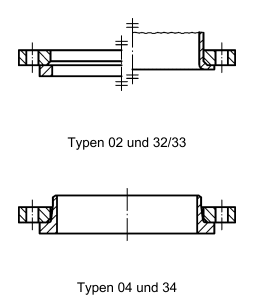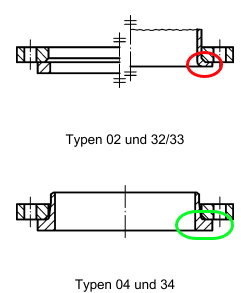I need to consider "special" flanged connection for a pipeline: tongue and groove, male/female, ring type joint.
The medium is sewage gas at positive pressure <100mbar, ~40°C, the pipeline material is stainless steel, DN300, PN10
The reason for the range of flanges I consider is a specific german regulation, the TRBS2152 - flanged connections in gas systems create an ex-hazard zone unless they are one of the specified types or tested on a regular basis, and the connections in question will be hard to reach so the operator wants to avoid the checks.
Number one priority is of course reducing the number of flanges, but we will not arrive at zero.
These are my questions:
How to decide between the different flange types?
I tend towards nut and groove because these appear to be the most common and will definitly get feedback from the contractor (what do they have most experience with installing?)
So far I have not seen one of these as a loose flange. Are they available as loose flanges?
The medium is sewage gas at positive pressure <100mbar, ~40°C, the pipeline material is stainless steel, DN300, PN10
The reason for the range of flanges I consider is a specific german regulation, the TRBS2152 - flanged connections in gas systems create an ex-hazard zone unless they are one of the specified types or tested on a regular basis, and the connections in question will be hard to reach so the operator wants to avoid the checks.
Number one priority is of course reducing the number of flanges, but we will not arrive at zero.
These are my questions:
How to decide between the different flange types?
I tend towards nut and groove because these appear to be the most common and will definitly get feedback from the contractor (what do they have most experience with installing?)
So far I have not seen one of these as a loose flange. Are they available as loose flanges?


